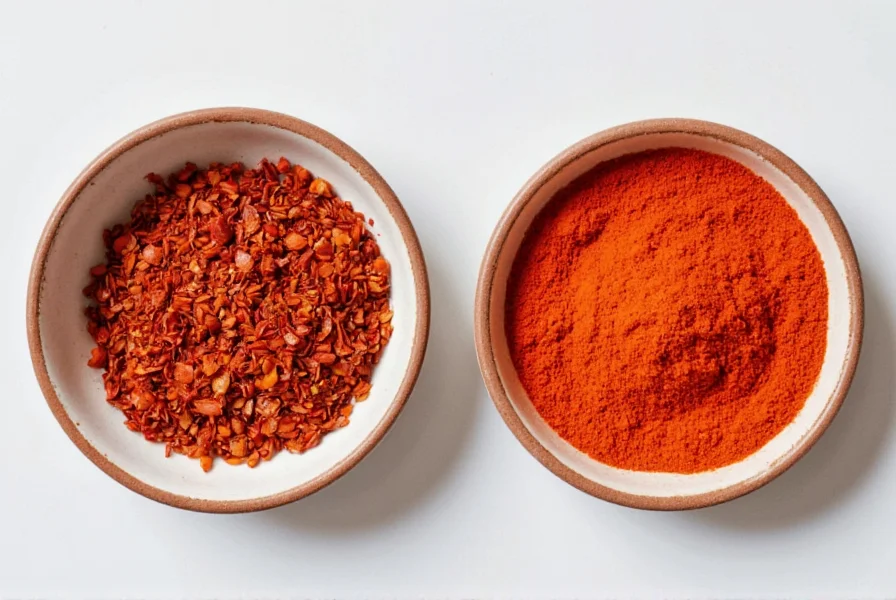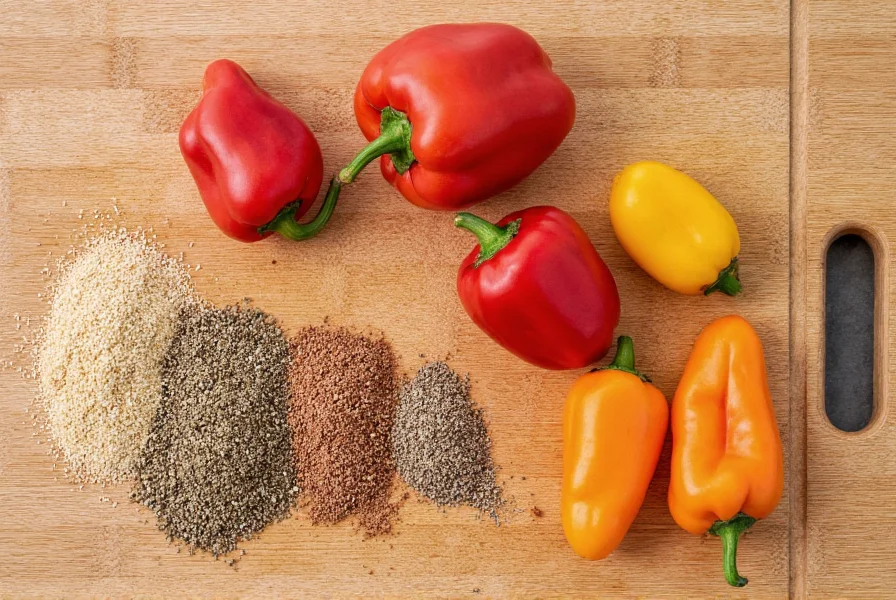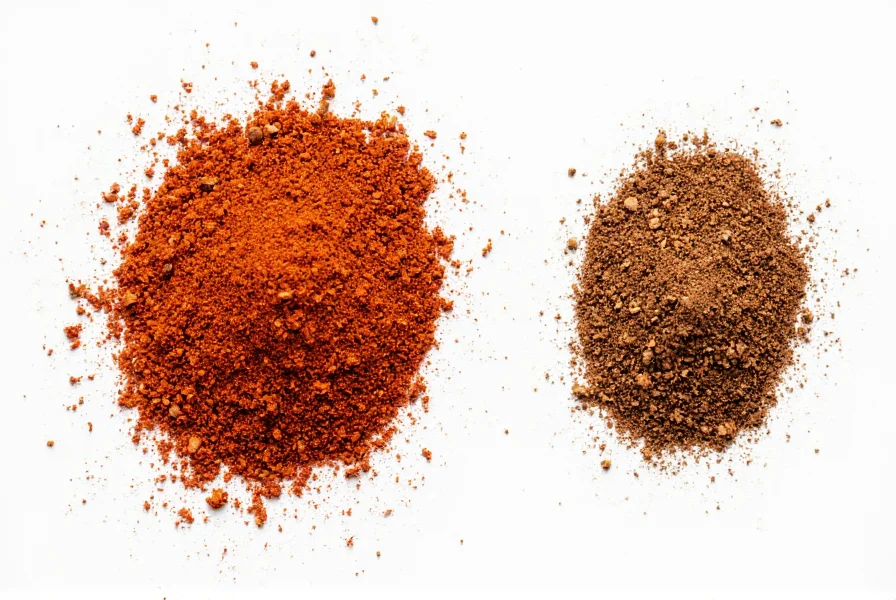The most effective substitutes for red pepper flakes are cayenne pepper (use 1:4 ratio), crushed Aleppo pepper (1:1 ratio), hot sauce (1/4 tsp per 1/4 tsp flakes), fresh chopped chili peppers like jalapeño, and smoked paprika with a pinch of cayenne. Each alternative offers different heat levels and flavor profiles that work best in specific recipes.
When you're in the middle of cooking and realize you've run out of red pepper flakes, knowing reliable alternatives can save your recipe. Red pepper flakes provide both heat and a subtle fruity flavor that's essential in many dishes, from Italian pasta to Asian stir-fries. Understanding what makes them unique helps you select the best substitute for your specific culinary needs.
What Makes Red Pepper Flakes Unique
Red pepper flakes, typically made from crushed dried cayenne peppers, deliver a specific combination of heat (measuring around 30,000-50,000 Scoville units), subtle fruitiness, and slight smokiness. They contain both seeds and flesh of the pepper, creating a balanced heat that builds gradually rather than hitting all at once. This distinctive profile explains why simply using cayenne powder often produces different results.
Top 5 Substitutes for Pepper Flakes with Usage Guidelines
1. Cayenne Pepper Powder
Cayenne powder offers the closest heat profile but lacks the textural element of flakes. Since it's more concentrated, use only 1/4 to 1/2 teaspoon of cayenne for every 1 teaspoon of red pepper flakes. This substitute works best in sauces, soups, and marinades where texture matters less. Be cautious with measurements—cayenne can easily overpower a dish if used in equal amounts.

2. Crushed Aleppo Pepper
Aleppo pepper provides a more complex flavor profile with moderate heat (10,000 Scoville units) and a hint of saltiness and fruitiness. Use a 1:1 substitution ratio for red pepper flakes. This Middle Eastern staple works exceptionally well in Mediterranean dishes, on roasted vegetables, and in tomato-based sauces. Its slightly fermented flavor adds depth that regular red pepper flakes don't provide.
3. Hot Sauce
Liquid hot sauces like Tabasco or Frank's RedHot can substitute for red pepper flakes in liquid-based recipes. Use approximately 1/4 teaspoon of hot sauce per 1/4 teaspoon of red pepper flakes. This alternative works well in soups, stews, and braises but adds vinegar notes that change the flavor profile. For oil-based recipes like garlic bread with chili oil, consider using chili oil instead of vinegar-based hot sauces.
4. Fresh Chopped Chili Peppers
Fresh jalapeños, serranos, or Thai bird chilies provide vibrant heat with different flavor characteristics. Use 1 finely chopped fresh chili pepper (seeds included) to replace 1/2 teaspoon of red pepper flakes. Fresh peppers offer brighter, grassier notes and more immediate heat. They work particularly well in salsas, fresh salads, and dishes where you want visible specks of color. Remember that fresh peppers vary significantly in heat level based on growing conditions.
5. Smoked Paprika with Cayenne
For recipes where you want to maintain color without overwhelming heat, combine 1 teaspoon smoked paprika with 1/8 teaspoon cayenne to replace 1 teaspoon of red pepper flakes. This blend preserves the visual appeal while providing adjustable heat. It's ideal for pizza seasoning, roasted meats, and dishes where you want subtle smokiness along with mild heat.
| Substitute | Heat Level | Flavor Profile | Best For | Substitution Ratio |
|---|---|---|---|---|
| Cayenne Powder | High (30,000-50,000 SHU) | Sharp, direct heat | Soups, sauces, marinades | 1:4 (cayenne:flakes) |
| Aleppo Pepper | Moderate (10,000 SHU) | Fruity, slightly salty | Mediterranean dishes, tomato sauces | 1:1 |
| Hot Sauce | Variable | Vinegary, liquid | Stews, braises, liquid recipes | 1/4 tsp per 1/4 tsp flakes |
| Fresh Chilies | Variable (5,000-50,000 SHU) | Grassy, bright | Salsas, fresh dishes, visible specks | 1 pepper = 1/2 tsp flakes |
| Smoked Paprika + Cayenne | Low-Moderate | Smoky, earthy | Pizza, roasted meats, visual appeal | 1 tsp paprika + 1/8 tsp cayenne = 1 tsp flakes |
Special Considerations for Specific Recipes
Certain dishes require more thoughtful substitution. For pizza with chili oil, where red pepper flakes are steeped in oil, consider using dried whole chilies instead—they infuse the oil with flavor without becoming bitter during cooking. In delicate seafood dishes, milder substitutes like Aleppo pepper prevent overwhelming the subtle flavors. When making homemade chili crisp, fresh chilies provide better texture than powdered alternatives.
For those following specific dietary needs, note that many commercial red pepper flakes contain anti-caking agents. If you're avoiding additives, freshly crushed dried chilies make the purest substitute. Gluten-free cooks should verify that any pre-made chili crisp or hot sauce substitutes are certified gluten-free.
Common Substitution Mistakes to Avoid
Many home cooks make these critical errors when substituting red pepper flakes. Using equal amounts of cayenne powder often results in painfully hot dishes—remember it's significantly more concentrated. Adding fresh chilies to cold dishes without proper preparation can create uneven heat distribution. Substituting sweet paprika without adding heat results in missing the essential spicy element. And using liquid substitutes in dry rubs creates texture issues that affect browning and crust formation.
When substituting in baking applications like spicy chocolate or chili-infused cookies, powdered alternatives work best for even distribution. For finishing dishes tableside, choose substitutes with visible texture like crushed dried chilies rather than powders that might clump.
Creating Your Own Custom Pepper Blend
For frequent cooks, creating a personalized red pepper flake substitute allows customization of heat and flavor. Try combining equal parts dried guajillo peppers (for fruitiness), arbol peppers (for heat), and a pinch of chipotle powder (for smokiness). Grind to a coarse consistency rather than fine powder to mimic the texture of commercial red pepper flakes. Store your custom blend in an airtight container away from light for up to six months.

Frequently Asked Questions
Can I use paprika instead of red pepper flakes?
Yes, but with modifications. Regular sweet paprika lacks heat, so combine 1 teaspoon smoked paprika with 1/8 teaspoon cayenne to replace 1 teaspoon of red pepper flakes. This maintains both color and appropriate heat level for most recipes.
How much cayenne equals 1 teaspoon of red pepper flakes?
Use only 1/4 to 1/2 teaspoon of cayenne powder to replace 1 teaspoon of red pepper flakes. Cayenne is significantly more concentrated, so using equal amounts will make your dish much hotter than intended.
What's the best substitute for red pepper flakes in pizza seasoning?
For pizza, crushed Aleppo pepper works best as a 1:1 substitute. It provides similar visual appeal with moderate heat and a subtle fruitiness that complements tomato sauce. Smoked paprika with a pinch of cayenne also works well if you prefer a smokier profile.
Can I substitute fresh jalapeños for red pepper flakes?
Yes, use 1 finely chopped fresh jalapeño (with seeds) to replace 1/2 teaspoon of red pepper flakes. Fresh peppers provide brighter heat but vary in spiciness, so taste as you go. They work particularly well in salsas and fresh dishes where you want visible specks of chili.
Why does my substitute make the dish too hot?
This usually happens when using equal amounts of cayenne powder or fresh hot peppers. Remember that powdered alternatives are more concentrated, and fresh peppers vary in heat. Start with half the recommended amount, cook your dish partially, then adjust heat level before finishing.











 浙公网安备
33010002000092号
浙公网安备
33010002000092号 浙B2-20120091-4
浙B2-20120091-4